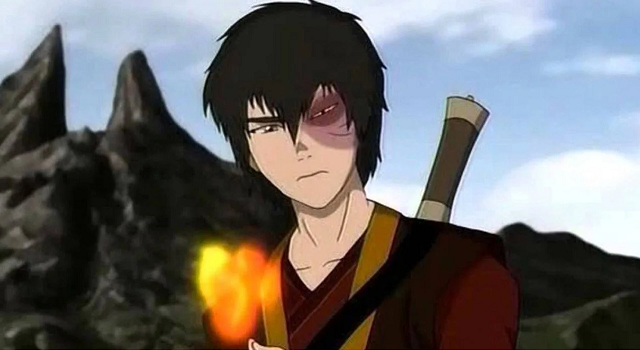Fire! If the wheel is humanity’s oldest invention, fire is the earliest natural element we harnessed. A chemical process requiring heat, fuel, and oxygen; if one wanted to put a fire out, one simply removes one point on that triangle. A weapon, a source of life, an aspect of human ritual – famously associated with the very concept of storytelling itself, with the image of people sitting around a fire telling stories being used, ironically, by an infinite number of storytellers.
Fire is one of the four magical elements in the mythology of Avatar: The Last Airbender. I have criticised its storytelling in the past, but the biggest strength of A:TLA is its vivid and creative worldbuilding in which its story operates on rules that are consistent, interesting, and easy to image oneself interacting with (a quality it shares with the Stargate TV franchise and Game Of Thrones). One interesting part of the story is how it incorporates its worldbuilding into how characters express themselves. Zuko is a firebender, and in the early parts of the story his use of fire is brash and exaggerated. As he finds peace within himself and trains with Aang and his friends, he picks up waterbending techniques and incorporates them into his fighting style. It conveys that he’s learned some personal flexibility and a willingness to not jump to overkill as a way to win every fight, and it’s part of the overall theme of the show in trying to find balance between different extremes.
Fireball is one of the most iconic spells in Dungeons & Dragons, with the image of the wizard casting a massive firey explosion having a firm place in the mind’s eye of generations of gamers. To properly convey its power: upon creation at first level, a wizard can learn Fire Bolt, which causes 1d10 points of damage – that is to say, one ten-sided dice. A goblin – one of the most basic enemies in the game – has seven hit points, so Fire Bolt obviously has a seven out of ten chance of killing them in one turn. Fire Bolt is a cantrip, which means you can cast it as many times per day as you wish. There are also ‘spell levels’ – distinct from player levels – which cost you a ‘spellcasting slot’. For example, Burning Hands is a 1st level spell that creates a cone of fire from yourself that extends fifteen feet and does 3d6 fire damage to anything caught in the blast; if you have five 1st level spell slots and three 2nd level spell slots, you could cast it eight times before needing to take a ‘long rest’.
Fireball is a 3rd level spell that does 8d6 damage within a twenty-foot square of your choice that’s within 120 feet of you. If you cast Fireball on sixteen goblins grouped together in that twenty foot square and all of them fail to dodge the explosion (which would cause them to take half damage), you have a 99.99994% chance of wiping them all out in a single turn. I swear, all this math is fun as hell when you’re actually playing. Fireball is also a subject of one of an infinite number of incredibly tedious debates within the community as nerds argue over exactly how Fireball works. Is it an actual explosion, or is it merely an expanding magical fire? Does it spark into an explosion or does it just appear? The 5th edition rules are deliberately vague on matters like this to allow individual DMs to put their own spin on things; I follow that instinct and prefer to default to the DM I’m playing with.
A running gag throughout Green Room is how members of the Nazi gang repeatedly point out fire hazards. It’s a great example of a tightly plotted genre work stopping for a quick second, in this case for some comic relief. Patrick Stewart’s comic timing and delivery of the line “That’s a fire hazard,” practically send me into space. Part of the reason it’s so funny is because of its banality; obviously, it’s hilarious right next to people getting eaten alive by dogs, but it’s also because I don’t generally associate Nazis with genuine concern for fire safety. It is, of course, common knowledge that the original Nazis were not even close to the efficient war machine they liked to pretend to be, and in my experience their descendants tend to be equally disorganised and inefficient. In the context of a thriller, a smart enemy is generally more frightening than a dumb one because it makes it feel like a more difficult challenge for its protagonists.
One of the most famous aspects of both Alien and The Thing is that both movies have their protagonists successfully take on their horrific enemy with big-ass flamethrowers. In both cases, it’s because they’re on a more scientific expedition with no reason to believe they have to kill anything; indeed, the one gun the characters have in The Thing only serves to make the situation so much worse. The flamethrowers are present as a technical tool that our characters are forced to improvise with. I particularly enjoy the sequence in which MacReady gets the flamethrower because it’s an early example of his quick thinking under pressure. Both movies are famed for being horror movies in which everyone acts as rationally as possible; the flamethrowers are part of that rationality.
What are your favourite examples of fire in fiction?

